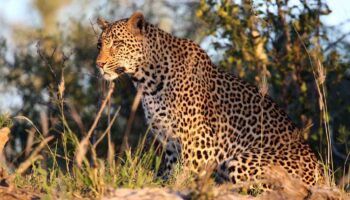MalaMala Game Reserve is the oldest and largest private Big 5 Game Reserve in South Africa comprising 13,300 hectares and shares a 19 kilometer unfenced border with the world-renowned Kruger National Park. The unfenced boundary allows wildlife to move freely onto MalaMala and many of the animals have a territory overlapping a portion of both reserves. This greatly increases the animal variety and provides unimpeded access to magnificent wildlife. The reserve has been acknowledged as having the best game viewing in South Africa with lions, leopards, rhinoceros and elephants being easily spotted here. MalaMala is a pristine birding destination as well with over 500 species that interchange their habitat with Kruger National Park having been recorded. The reserve is the safari industry’s blueprint to the luxury photographic safari. There is no limit on sightings which is an ideal scenario for photographers – no ‘queue to view’ as this enormous tract of land has a low density of vehicles traversing the area. Tjololo, a famous male leopard that became a star of the National Geographic Channel lived in the reserve.
MalaMala features many different habitat types, which are an allure in themselves and range from open savannah to granite outcrops. Thirteen kilometers of the perennial Sand River also flows through the reserve and has been named as one of the most distinct landscape features. The river is one of the best spots to view wildlife especially during the dry season when they gather to take water.
MalaMala being a private game reserve means that it is not accessible for day visitors. No self-catering, camping, or picnic facilities are available on site. As such you need a booking at one of the MalaMala lodges upon entering the reserve. Only guests accommodated in one of the MalaMala Game Reserve camps may traverse this immense tract of privately owned game land

